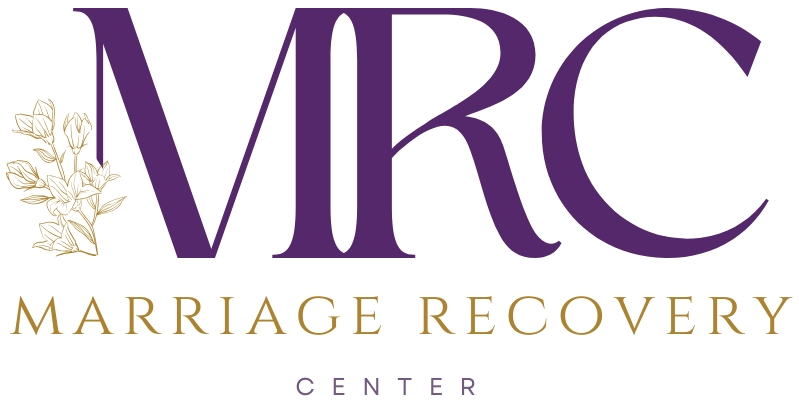Does every situation feel threatening to you? Do you constantly question your own thoughts and feelings? Do you feel easily overwhelmed, or find yourself withdrawing and disconnecting from relationships? Jonathan talks about what the trauma response looks like and steps you can take to recover from emotional abuse trauma. If you think you may be experiencing symptoms of trauma, it is important that you consult a professional for a proper diagnosis and treatment plan.
How to Recover from Emotional Abuse Trauma
If you have experienced a traumatic event in your life, whether it’s the chronic stress resulting from an abusive or manipulative relationship, the trauma of a discovery in that relationship such as infidelity, or any other form of emotional abuse, you know the feeling that your life has been turned upside down. Perhaps you’ve experienced brain fog, difficulty concentrating, racing thoughts, or the overwhelming sensation of being emotionally shut down. In such situations, you may find yourself asking: Is healing from trauma possible, and if so, what does it look like?
Jonathan Glover, a therapist working at the Marriage Recovery Center, will guide you through the process of healing from trauma, specifically the trauma resulting from an emotionally abusive relationship. This journey can be complex, as it often involves not only repairing the relationship itself but also navigating your own individual healing process. In this article, we will explore the essential steps in healing from emotional abuse trauma and how to regain control of your life.
1. Ensuring Safety
The first and foremost concern when healing from trauma is safety. You must prioritize both physical and emotional safety as you embark on the healing process. It’s crucial to ensure that you do not experience new traumatic events or re-traumatize yourself while working towards recovery.
In the context of an emotionally abusive relationship, the source of trauma isn’t the perpetrator themselves but the aggressive, manipulative, deceptive, demeaning, or controlling behaviors. Identifying and treating these behaviors is a vital step in achieving safety. However, addressing these behaviors is primarily about preventing future harm rather than healing the damage already caused.
Imagine it like driving down a road with a rabid dog in the front seat snarling and attacking you. You’re screaming for help, and someone shoots a tranquilizer dart through the window, putting the dog to sleep. While the immediate threat is gone, the underlying fear remains. This analogy highlights the need to address the fear and emotional trauma you’ve experienced.
2. Establishing Boundaries
Boundaries are another key component of obtaining safety and ensuring future protection. Setting clear boundaries is essential to shield yourself from harm and uncomfortable situations. Boundaries aren’t about controlling someone else’s behavior; they define what interactions, environments, or behaviors make you feel unsafe or uncomfortable and establish a plan for how you will respond to them.
For someone who has endured an emotionally abusive relationship for an extended period, setting boundaries can be daunting. Victims are often conditioned to prioritize the perpetrator’s needs and emotions, relegating their own emotions to the background. Boundaries serve as the line that separates you from others and are instrumental in your healing process.
3. Self-Rediscovery
In emotionally abusive relationships, victims are often so engulfed in the perpetrator’s needs and expectations that their own identities get buried. The next phase of healing focuses on reclaiming your sense of self and identifying your needs, strengths, and support systems.
It’s vital to embark on this self-rediscovery journey, as it helps you identify where the messages that have influenced your self-worth and identity originate. Often, these messages don’t align with your goals, values, or beliefs. This process can be challenging, as it may reveal the extent to which the emotional abuse has affected various areas of your life.
Rediscovering yourself can elicit overwhelming feelings of grief, loss, anger, depression, and even shame or guilt. However, this journey is a crucial step in healing from emotional abuse and reclaiming your life.
4. Seek Validation and Recognition
Many victims look to their perpetrators for recognition and validation of the damage they’ve inflicted. While it’s natural to desire acknowledgment, especially when you’re still in that relationship, it’s important to understand that full recognition and validation from the perpetrator may not always be possible.
This can be a difficult truth to accept. Yet, it’s essential to remember that healing is possible, even without the perpetrator’s acknowledgment. While validation from the perpetrator would be ideal, it’s not a requirement for your healing journey.
5. Acceptance
The next phase in healing involves acceptance. This isn’t about accepting the damage caused or the abusive behaviors themselves. It’s about acknowledging that you experienced trauma, and those experiences have shaped who you are today. Acceptance includes embracing all your emotions, strengths, and value, as well as recognizing the pain you’ve endured.
Acceptance can be challenging, but it’s a fundamental step towards healing and rebuilding your life.
6. Restoration and Repair
After accepting the reality of your experiences and emotions, the focus shifts to restoration and repair. This stage is about moving forward in the direction you want your life to take. It involves working on your goals, aspirations, and personal growth, and ultimately, it’s about regaining control over your life.
Healing from trauma, especially the trauma resulting from an emotionally abusive relationship, is possible. While it may be a long and at times challenging journey, it’s essential to remember that you can emerge stronger and more resilient. Seek support from a therapist or counselor who can guide you through the healing process and provide answers to any questions you may have. With patience and determination, you can reclaim your life and find the healing and peace you deserve.
To learn how we can help, reach out to us at (206) 219-0145 or info@marriagerecoverycenter.com to speak with a Client Care Specialist
Also read: Do Narcissists Mean to Hurt Their Partners?
About Dr. Hawkins:
The internet is inundated with hyperbole and misinformation about narcissism, leaving many people confused and hopeless. Get the facts on narcissism and emotional abuse from someone who has been researching, writing about and treating narcissism and emotional abuse for over a decade.
Dr. Hawkins is a best-selling author and clinical psychologist with over three decades of experience helping people break unhealthy patterns and build healthier relationships.
He is the founder and director of the Marriage Recovery Center and the Emotional Abuse Institute which offers education, training and counseling for people who want to break free of, and heal from, emotional abuse. Whether the perpetrator of the abuse is your spouse, partner, parent, boss, friend or family member, we offer practical advice for anyone trapped in a toxic, destructive relationship.
In addition to narcissism & emotional abuse, you’ll learn about the lesser known forms of abuse, including covert abuse, reactive abuse, spiritual abuse, secondary abuse, relationship trauma and much more.








